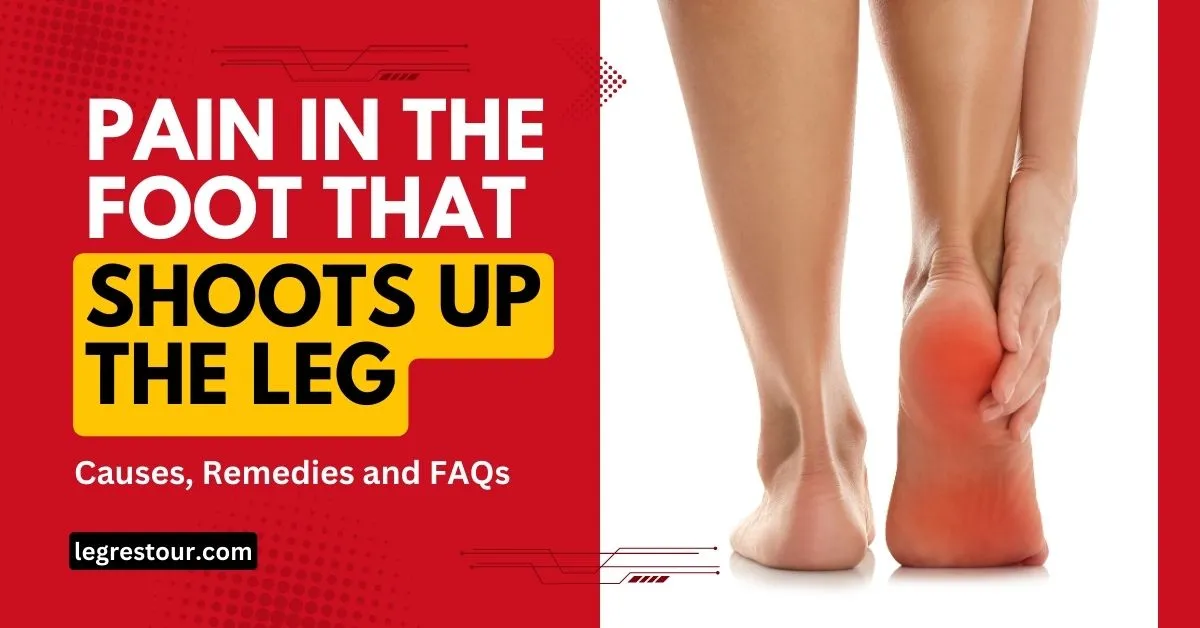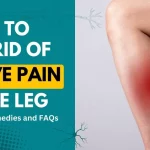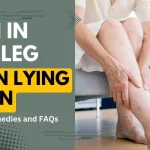Pain in Foot that Shoots Up Leg, also known as referred pain, can be caused by a variety of conditions. While the pain is felt in the leg, the source of the problem is often in the foot itself. Understanding the potential causes and applying the right remedies is key to finding relief.
Causes of Referred Foot Pain
There are several potential causes of Pain in Foot that Shoots Up Leg:
- Plantar Fasciitis: This is inflammation of the plantar fascia, the thick band of tissue that runs along the bottom of the foot. It is one of the most common causes of heel and arch pain. The pain is typically worse first thing in the morning or after long periods of standing.
- Morton’s Neuroma: This is a thickening of tissue around a nerve between the toes, usually between the third and fourth toes. It causes pain, burning or tingling in the ball of the foot that may radiate up the leg.
- Metatarsalgia: This general term refers to pain in the ball of the foot. It is often caused by an irritation of the nerve between the metatarsal bones in the foot. Pain and burning can radiate up the foot and leg.
- Arthritis: Osteoarthritis, rheumatoid arthritis and other forms of degenerative arthritis in the foot joints can lead to pain that travels up the leg. The pain is generally worse with walking or standing.
- Stress Fracture: Tiny cracks or fractures in the metatarsal or navicular bones from overuse can cause pain that radiates up the leg. Runners are at particular risk.
- Pinched Nerve: Compression of a nerve root in the lower spine, often due to a herniated disc, can cause sciatica pain that travels down the leg. Pain originates in the back and shoots down the leg.
- Deep Vein Thrombosis: A blood clot in the deep veins of the leg can lead to pain and swelling that travels up the leg. Risk factors include inactivity, obesity, smoking, pregnancy, and others. Seek immediate medical attention for suspected DVT.
Effective Remedies
Treating the underlying cause of the pain is the best way to find permanent relief, but several remedies can provide temporary improvement:
- Rest: Avoid activities that aggravate the pain, especially high-impact exercise. Take pressure off the foot by limiting standing and walking.
- Ice: Apply an ice pack wrapped in a towel to the painful area for up to 20 minutes several times per day to reduce inflammation.
- Elevation: Prop up the leg above the level of the heart when lying down to encourage blood flow away from the foot.
- Compression: Wrapping the foot and lower calf with an elastic bandage can provide support and limit swelling.
- Massage: Using the thumbs or a massage device, apply firm pressure in a circular motion to the arch and ball of the foot. This can help loosen tight muscles.
- Orthotics: Inserts or specialized shoe pads can be prescribed to correct biomechanical imbalances in the foot that contribute to pain.
- Stretching: Gently stretching the plantar fascia and Achilles tendon daily, especially first thing in the morning, can provide relief with continued use.
- Night Splint: Wearing a splint at night to keep the foot at a 90 degree angle gently stretches the calf and foot while sleeping.
When to See a Doctor
Make an appointment with your doctor if foot and leg pain:
- Does not improve with rest and home treatment
- Worsens at night or with rest
- Is accompanied by numbness, tingling or weakness
- Spreads to the calf or makes it difficult to bear weight on the leg
Diagnostic tests may be ordered, such as x-rays, MRI, bone scan, CT scan, blood work, or nerve conduction study. Based on the findings, your doctor can determine the underlying cause and best treatment options.
In Conclusion
Foot pain that travels up the leg should not be ignored, as the culprit is likely a problem in the foot itself. Applying self-care remedies and avoiding aggravating activities can help manage pain while pursuing an accurate diagnosis. Work with your doctor to determine the cause and discuss all treatment options for lasting relief. Consistent stretching, orthotic support, and appropriate footwear are key to preventing recurrence.
It’s also important for you: Pain in Heel of Foot When Walking
Frequently Asked Questions
Q: What does it mean if pain is worse at night or when resting?
A: Worsening pain at night is often a symptom of plantar fasciitis. The tissue tightens up after being inactive, causing more intense pain upon standing.
Q: Are there any preventative measures to avoid foot and leg pain?
A: Regular stretching, wearing supportive shoes, losing excess weight, and not overdoing activities that aggravate the pain can help prevent recurrence. Custom orthotics may also be beneficial.
Q: Should I avoid all exercise when foot and leg pain strikes?
A: Generally limit high-impact activity that pounds the feet, like running and jumping. Low-impact exercise like swimming, biking, or gentle yoga can be beneficial by promoting circulation and flexibility.
Q: What diagnostic tests are used to evaluate foot and leg pain?
A: X-rays can detect bone problems. MRI scans provide soft tissue evaluation. Nerve conduction studies check for nerve damage. CT scans give detailed views of bone and tissue.
Q: Can foot and leg pain be a sign of something serious?
A: In rare cases, it can be caused by neurological issues, tumors or vascular problems. See your doctor promptly if pain is severe, persistent and doesn’t improve with conservative treatment.
Q: How long does it take for foot and leg pain treatments to start working?
A: Most home remedies provide gradual relief over several weeks with consistent use. Custom orthotics may take some adjustment to show benefit. Talk with your doctor if pain persists longer than 2-3 months.



